The Covid-19 virus is more stable in air containing high levels of carbon dioxide, typical of poorly ventilated indoor spaces, new research claims. This means it lasts longer and is more likely to infect people. Even a moderate rise in carbon dioxide results in a significant increase in the risk of disease transmission, confirming the importance of good ventilation.
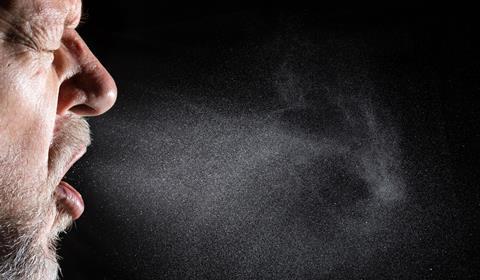
Most people contract Covid-19 after inhaling aerosol-containing droplets of the Sars-CoV-2 virus from the surrounding air. However, aerosolised viruses become less infectious over time, mainly because the exhaled aerosol becomes more alkaline, explains Allen Haddrell, an aerosol scientist at the University of Bristol and lead author on the paper.
‘To understand viral decay in respiratory aerosol, one needs to understand the complex pH dynamics occurring in the respiratory droplet,’ says Haddrell. ‘There is a significant amount of bicarbonate in respiratory fluid. When the bicarbonate leaves the aerosol in the form of CO2, it takes with it a large amount of acid. This results in a dramatic shift in pH of the droplet from neutral to more than 10. The high pH that respiratory aerosol reaches following exhalation is a major driver of viral decay. Thus, anything that reduces the pH of the aerosol will significantly prolong the time the virus will remain infectious in the air, consequently increasing overall transmission risk.’ Higher environmental carbon dioxide levels mean that the chemical equilibrium of the droplets is shifted and less bicarbonate decomposes, making the aerosols’ pH more acidic and hospitable to viruses.
The team measured how small increases in carbon dioxide affect the stability of the Sars-CoV-2 virus and then modelled how this change in stability affects transmission risk. They used their novel bioaerosol technology (controlled electrodynamic levitation and extraction of bioaerosols onto a substrate (Celebs)) to probe the survival of viruses in lab-generated airborne particles that mimic exhaled aerosol. They found that as little as 800ppm carbon dioxide can reduce the rate of viral decay, concentrations that can be found in enclosed spaces.
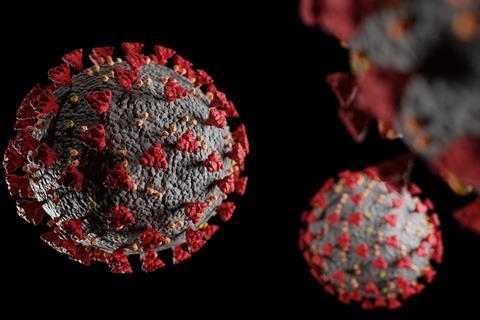
The team also used Celebs to investigate virus decay over 40 minutes where the carbon dioxide concentration was set to 3000ppm – routinely reached in crowded spaces such as UK primary schools – and at 500ppm. They found that overall decay is much slower at the higher carbon dioxide concentration where there was 10 times more virus after 40 minutes.
‘In terms of transmission, this is a massive difference in cumulative viral load,’ says Haddrell. ‘[Also] at 3000ppm, the final 30% of the initial aerosolised virus decays at an incredibly slow rate – it practically stops decaying relative to typical indoor ventilation.’
The team also showed that the cumulative acid content of the air (of which carbon dioxide is one contributor) has more impact on viral decay than humidity.
Their modelling found that a susceptible person would be four times more likely to pick up the Sars-CoV-2 virus after 10 minutes in a poorly ventilated classroom than in a well-ventilated one. Regardless of ventilation, when the concentration of carbon dioxide rises, the probability of transmission increases dramatically.
What’s more, the researchers say that they have discovered that the aerosolised Sars-CoV-2 decays over a complex three-stage process rather than a half-life. This is a new finding, which should improve the accuracy of risk estimates, says Haddrell.
Jose-Luis Jimenez, a chemist at the University of Boulder, Colorado, says the findings point to another reason behind the clear observation that transmission of Sars-CoV-2 is far easier indoors than outdoors. ‘While the authors had previously shown that CO2 did have an impact on virus survival, the fact that levels as low as 800ppm make a big difference is very surprising. Those are levels commonly observed indoors. This is important because it shows that if we can reduce CO2 indoors, or do more activities outdoors, we can significantly reduce virus transmission. If the virus decays faster, it can no longer infect.’
However, other researchers in this area have expressed concerns about the methodology and conclusions reached by the Bristol team. These include the failure to standardise the composition of the air in which they conduct their experiments and the fact that the droplets they study are – at more than 10μm – much larger than the respiratory aerosol particles in which most Sars-CoV-2 has been found, which are less than 1μm. These researchers believe that for typical indoor air composition and smaller aerosol particles, these particles will turn acidic rather than alkaline, something that was discussed further during peer review.
Update: A link to the peer review discussion of the article was added on 21 May 2024.
References
A Haddrell et al, Nat. Commun., 2024, 15, 3487 (DOI: 10.1038/s41467-024-47777-5)

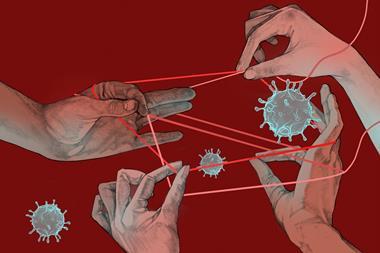

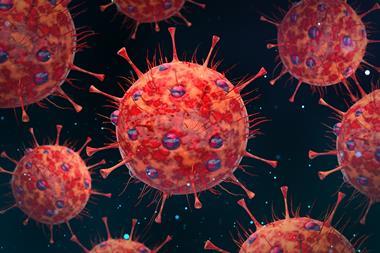
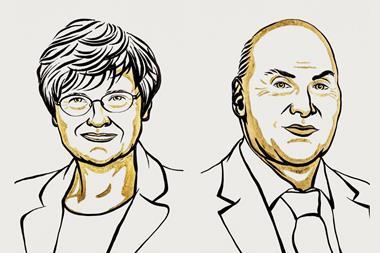
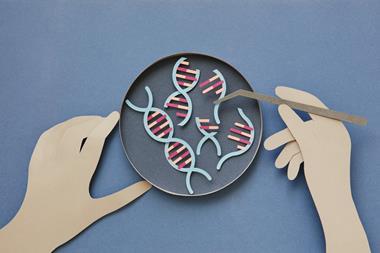






No comments yet